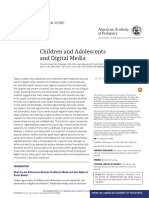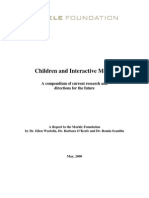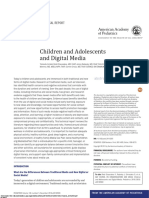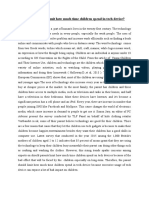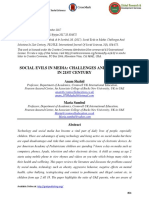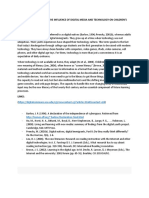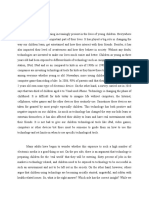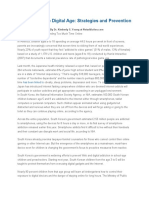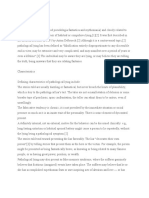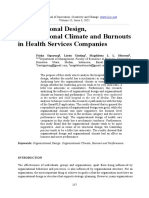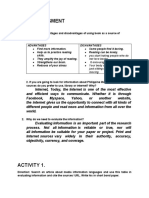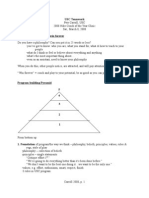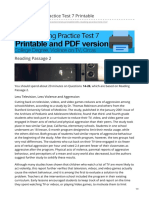0% found this document useful (0 votes)
25 views6 pagesLecture 9 - Oct. 25, 2022
This document discusses children's use of media including television and the internet. Some key points:
1) Children spend a significant amount of time consuming media which can both positively and negatively impact their development, learning, and health depending on content and amount of use.
2) Excessive television and screen time has been linked to poorer cognitive and physical outcomes while moderate usage of educational content can be beneficial.
3) Internet use presents both opportunities and risks for children in terms of access to information but also dangers like cyberbullying or inappropriate content without parental guidance and monitoring of usage.
Uploaded by
Deborah SinghCopyright
© © All Rights Reserved
We take content rights seriously. If you suspect this is your content, claim it here.
Available Formats
Download as DOCX, PDF, TXT or read online on Scribd
0% found this document useful (0 votes)
25 views6 pagesLecture 9 - Oct. 25, 2022
This document discusses children's use of media including television and the internet. Some key points:
1) Children spend a significant amount of time consuming media which can both positively and negatively impact their development, learning, and health depending on content and amount of use.
2) Excessive television and screen time has been linked to poorer cognitive and physical outcomes while moderate usage of educational content can be beneficial.
3) Internet use presents both opportunities and risks for children in terms of access to information but also dangers like cyberbullying or inappropriate content without parental guidance and monitoring of usage.
Uploaded by
Deborah SinghCopyright
© © All Rights Reserved
We take content rights seriously. If you suspect this is your content, claim it here.
Available Formats
Download as DOCX, PDF, TXT or read online on Scribd
/ 6










